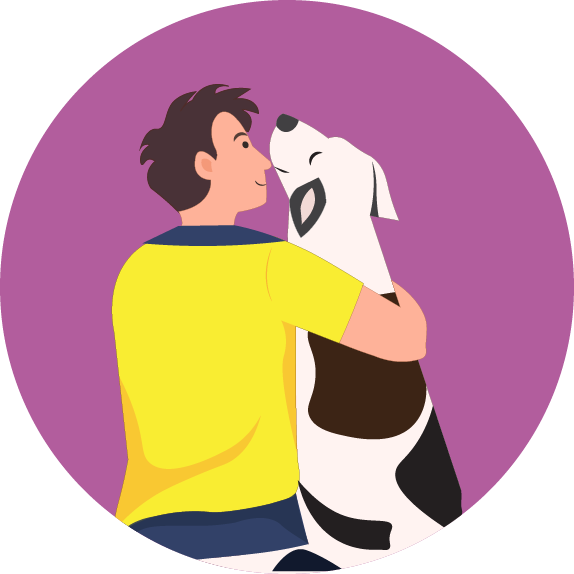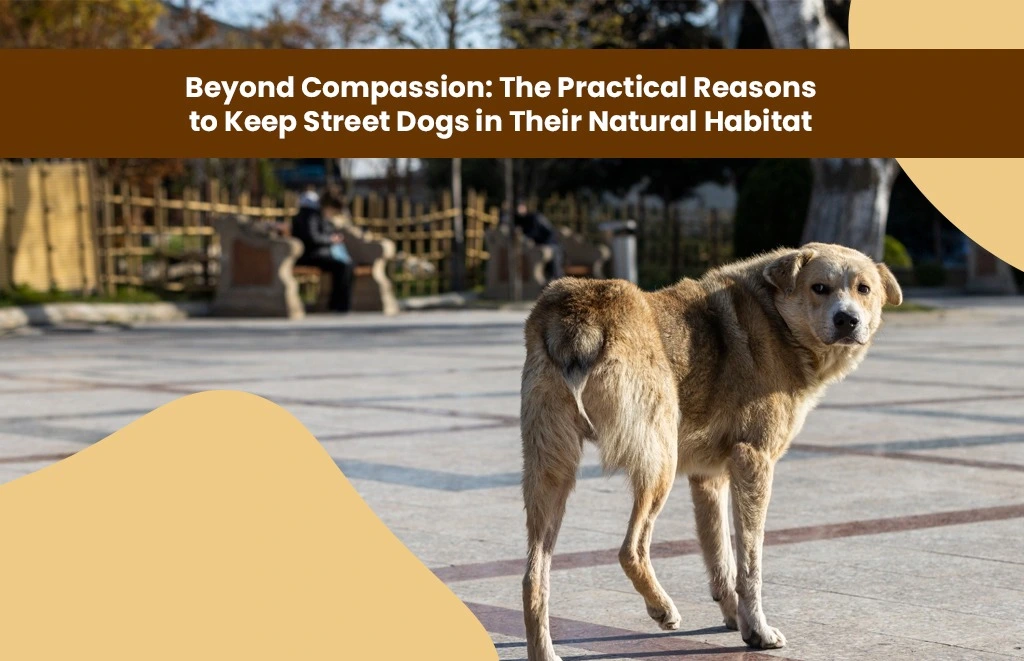Beyond Compassion: The Practical Reasons to Keep Street Dogs in Their Natural Habitat
Table of Contents
- Introduction
- What are Indian Pariah Dogs?
- Unique Traits and Characteristics
- Debunking Myths: Understanding Indian Street Dog Behaviour
- Adaptability to Indian Climate and Environment
- The Adoption Process
- Success Stories: Pariah Dogs as Loving Companions
- Caring for Indian Pariah Dogs
- Challenges and Myths
- How to Support Pariah Dog Adoption Initiatives
- FAQ
- Conclusion
Introduction
If you live in India, you have probably seen street dogs roaming around your neighbourhood, scavenging for food and seeking shelter. You may have felt pity for them or even wanted to adopt one of them. But did you know these dogs are not just homeless pets but a unique and ancient breed that adapted to the Indian environment and culture? This blog post will explore the fascinating world of Indian Pariah Dogs, also known as Desi Dogs, Indie Dogs, or Neri Kuttas. We will learn about their history, traits, behaviour, and benefits and why street dogs in their natural habitat are better than in human homes. We will also debunk some common myths and misconceptions about these dogs and share tips for supporting their welfare and conservation.
What are Indian Pariah Dogs?
Indian Pariah Dogs are the landrace of Indian dogs, meaning they are the original and indigenous dogs of the country. They are not a specific breed but a type of dog that has evolved naturally over thousands of years without human intervention or selective breeding. They are also known as pye-dogs, which derives from the Sanskrit word para, meaning “outsider”. They are closely related to Asian pariah dogs, such as the Thai Ridgeback, the Dingo, and the Basenji.
Indian Pariah Dogs are medium-sized dogs with wedge-shaped heads, erect ears, and curved tails. They have short coats in various colours but mostly in shades of brown, with or without white markings. Solid black, brindle, and spotted coats are rare and may indicate some mixing with other breeds. They are lean and muscular, with a sturdy and agile body. They have a high prey drive, a strong survival instinct, and a keen sense of smell and hearing.
Unique Traits and Characteristics
Street Dogs In Their Natural Habitat have many traits and characteristics that make them different from other dogs. Some of these are:
Intelligence:
Indian Pariah Dogs are brilliant and independent dogs. They can learn quickly and adapt to different situations. They are also very good at problem-solving and finding ways to survive and thrive. However, they are not easily trained as they have a strong will and a mind. They need a firm and consistent leader who can earn their respect and trust.
Loyalty:
Indian Pariah Dogs are loyal and devoted to their human companions once they form a bond with them. They are not friendly to strangers and can be very protective and territorial of their family and home. They are also loyal to their pack, which may consist of other street dogs or humans. They will defend their pack from any threat and cooperate and communicate with them.
Health:
Indian Pariah Dogs are healthy and hardy, as they have not been subjected to inbreeding or genetic disorders. They have a robust immune system and are resistant to many diseases and parasites that affect other dogs. They also have a long lifespan, averaging 10 to 13 years. They do not require much grooming except for the necessities, such as brushing, bathing, and nail trimming.
Temperament:
Indian Pariah Dogs have a complex and varied temperament, depending on their environment and upbringing. They can be friendly and affectionate or aloof and wary, depending on how they are treated by humans. Depending on their mood and situation, they can be playful and energetic or calm and relaxed. Depending on their training and leadership, they can be obedient, cooperative, stubborn, and rebellious. They are not naturally aggressive but can be assertive and dominant, especially with other dogs. From an early age, they need socialisation and exposure to different people, animals, and situations to prevent them from becoming fearful or aggressive.
The History and Heritage
Indian Pariah Dogs have a long and rich history and heritage, dating back to the dawn of civilisation. They are one of the oldest and most primitive dogs and have lived alongside humans for over 15,000 years. They are believed to be the ancestors of all modern Indian dog breeds, such as the Rajapalayam, the Chippiparai, the Kanni, and the Mudhol Hound.
Indian Pariah Dogs have played an essential role in the culture and history of India, as they have been associated with various religions, myths, and legends. For example, in Hinduism, dogs are considered sacred animals and are associated with different gods and goddesses, such as Yama, the god of death; Bhairava, the fierce manifestation of Shiva; and Durga, the goddess of power. Dogs are also revered during the festival of Kukur Tihar, where people pay homage to stray dogs and feed them. In Buddhism, dogs are considered compassionate and loyal beings and are often depicted as companions of monks and bodhisattvas. In Zoroastrianism, dogs are regarded as guardians of the soul. They are involved in various rituals and ceremonies, such as the sagdid, where a dog is brought to gaze upon the corpse of a deceased person.
Indian Pariah Dogs have also been involved in various historical events and movements, such as the Indian Rebellion of 1857, where they helped the rebels fight against the British, and the Indian Independence Movement, where they supported the freedom fighters and the non-violence campaign of Mahatma Gandhi. They have also been used as hunting dogs, guard dogs, and police dogs by various communities and groups in India.
Debunking Myths: Understanding Indian Street Dog Behaviour
One of the biggest challenges that Indian Pariah Dogs face is the lack of understanding and awareness about their behaviour and needs. Many people have misconceptions and prejudices about these dogs and treat them with fear, hatred, or indifference. Some of the common myths and misconceptions about Indian Pariah Dogs are:
They are dirty and diseased:
This is untrue, as Indian Pariah Dogs are not naturally aggressive or violent dogs unless provoked, threatened, or abused. They are usually timid and will avoid confrontation with humans or other animals. They will only attack or bite if they feel scared, hurt, cornered, or are protecting their pack or territory. They can be easily trained and socialised to prevent them from becoming fearful or aggressive.
They are aggressive and dangerous:
This is untrue, as Indian Pariah Dogs are not naturally aggressive or violent dogs unless provoked, threatened, or abused. They are usually timid and will avoid confrontation with humans or other animals. They will only attack or bite if they feel scared, hurt, cornered, or are protecting their pack or territory. They can be easily trained and socialised to prevent them from becoming fearful or aggressive.
They are stupid and useless:
This is not true, as Indian Pariah Dogs are brilliant and useful dogs with high intelligence and a versatile skill set. They can learn quickly and adapt to different situations. They are also very good at problem-solving and finding ways to survive and thrive. They can be helpful as guard dogs, police dogs, service dogs, or companions, depending on their training and personality.
Benefits of Adopting a Pariah Dog
If you are considering adopting a dog, you may want to adopt an Indian Pariah Dog, as they have many benefits and advantages over other breeds. Some of the benefits of adopting a Pariah Dog are:
You will save a life:
Adopting a Pariah Dog will save a life, as these dogs are often neglected, abandoned, or euthanised due to the lack of shelters, resources, and awareness. You will also help reduce the number of stray dogs on the streets and improve their welfare and quality of life.
You will get a unique and loyal companion:
Adopting a Pariah Dog gives you a unique and loyal companion, as these dogs have a distinctive appearance and personality. They are loyal and devoted to their human companions once they bond with them. They are also friendly and affectionate and will love you unconditionally.
You will get a healthy and hardy dog:
By adopting a Pariah Dog, you will get a healthy and hardy dog, as these dogs are very healthy and robust as they have not been subjected to inbreeding or genetic disorders. They have a robust immune system and are resistant to many diseases and parasites that affect other dogs. They also have a long lifespan, averaging 10 to 13 years.
You will get an intelligent and adaptable dog:
By adopting a Pariah Dog, you will get an intelligent and adaptable dog, as these dogs are brilliant and adaptable, as they can learn quickly and adapt to different situations. Street Dogs In Their Natural Habitat are also very good at problem-solving and finding ways to survive and thrive. They can be trained and socialised to suit your lifestyle and preferences.
Adaptability to Indian Climate and Environment
Another reason why Indian Pariah Dogs are also better off living in their natural habitat than in human homes is because they are highly adaptable to the Indian climate and environment. They can withstand the heat, humidity, rain, and cold. They can survive on various food sources, such as scraps, leftovers, fruits, and rodents. They can also cope with the noise, pollution, traffic, and crowds of the urban areas and the predators, diseases, and natural disasters of the rural areas.
However, this does not mean they do not need any care or protection from humans. They still face many threats and challenges, such as accidents, injuries, illnesses, poisoning, abuse, and culling. They also suffer from overpopulation, malnutrition, and lack of shelter and veterinary care. Therefore, they need human intervention and support, such as vaccination, sterilisation, feeding, and adoption, to improve their welfare and quality of life.
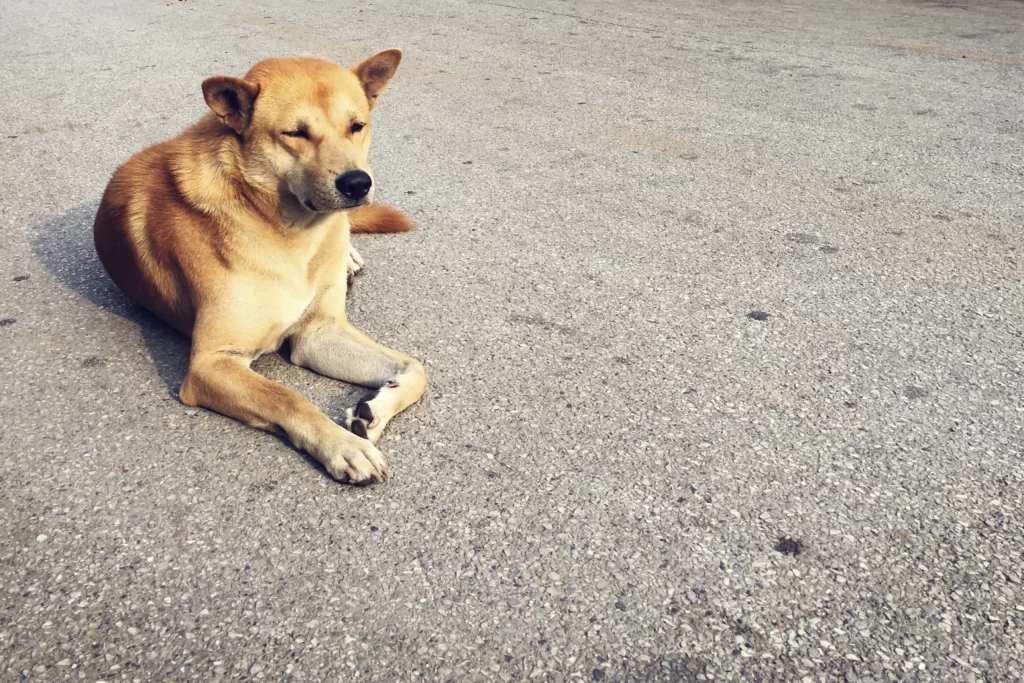
The Adoption Process
If you are interested in adopting an Indian Pariah Dog, you must follow a proper adoption process to ensure that you and the dog are a good match and can adjust to your home and lifestyle. Here are some steps to follow:
- Find a reputable rescue organisation or shelter that works with Indian Pariah Dogs. You can search online, ask for recommendations, or visit local animal welfare groups. Ensure that the organisation or shelter is ethical, transparent, and trustworthy and follows the best practices for animal care and adoption.
- Visit the organisation or shelter and meet the dogs. Observe their behaviour, personality, and health, and ask the staff or volunteers about their history, background, and needs. Choose a dog that suits your preferences, expectations, and capabilities and that you feel a connection with.
- Fill out an adoption application and undergo a screening process. The organisation or shelter will ask you questions about yourself, your family, your home, your lifestyle, and your experience with dogs. They will also conduct a home visit to check if your home is suitable and safe for the dog. They may also ask for references, such as your veterinarian, landlord, friends, and relatives.
- Pay an adoption fee and sign an adoption contract. The adoption fee covers the expenses for the dog’s vaccination, sterilisation, microchipping, and other medical treatments. The adoption contract outlines the terms and conditions of the adoption, such as the rights and responsibilities of both parties, the return policy, and the post-adoption support.
- Bring the dog home and help them settle in. The organisation or shelter will provide tips and advice on introducing the dog to your home, your family, and your other pets and how to deal with any issues or challenges that may arise. You may also need to crate-train, house-train, and obedience-train the dog, depending on their age and level of training.
- Keep in touch with the organisation or shelter and update them on the dog’s progress. The organisation or shelter will follow up with you and the dog to see how they are doing and offer any assistance or guidance you may need. They will also appreciate any feedback, photos, or stories you can share in celebrating the dog’s adoption and success.
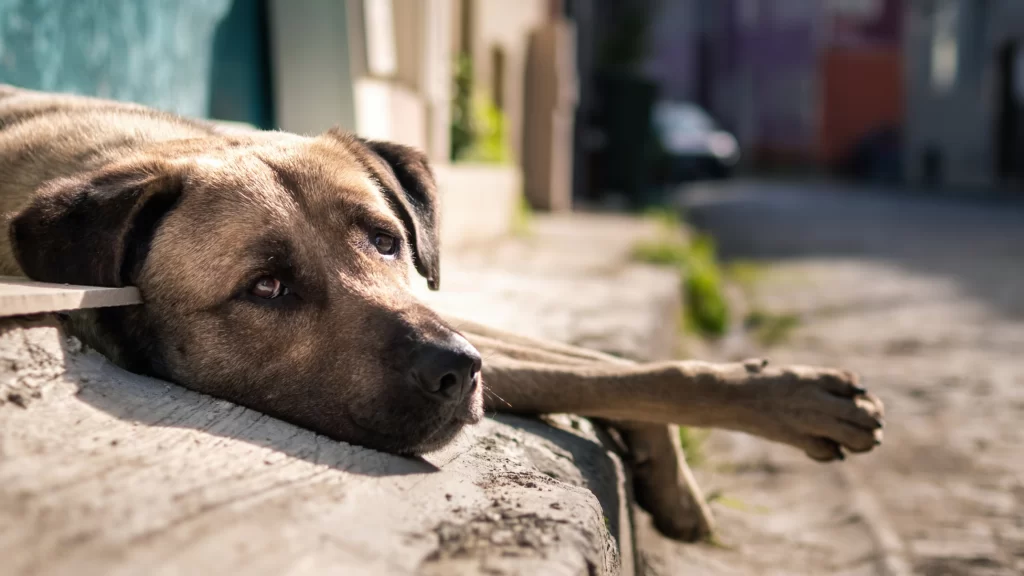
Success Stories: Pariah Dogs as Loving Companions
If you are still not convinced that Indian Pariah Dogs are lovely dogs to adopt, you may want to read some of the success stories of people who have adopted them and experienced their love and joy. Here are some examples:
Rani and Raju:
Rani is a Pariah Dog who was rescued from the streets of Delhi by a kind woman named Priya. Priya took her home, nursed her back to health, and soon fell in love with her sweet and gentle personality. She decided to adopt her and named her Rani, meaning “queen”. Rani became a happy and loyal Priya family member and even befriended Priya’s other dog, Raju, a Labrador Retriever. Rani and Raju are inseparable and enjoy playing, cuddling, and sleeping together. Priya says that Rani has taught her the true meaning of compassion and gratitude and that she is the best thing that ever happening to her.
2.Bruno and Rocky:
Bruno is a Pariah Dog found injured and starving on the streets of Mumbai by a young man named Rohan. Rohan took him to a vet, paid for his treatment, and then decided to foster him until he could find a permanent home. However, he soon realised he had grown attached to Bruno and decided to keep him. He named him Bruno, meaning “brown”, as he had a beautiful brown coat. Bruno became a playful and energetic companion for Rohan. Also, he got along well with Rohan’s other dog, Rocky, a German Shepherd. Bruno and Rocky are now best friends and love to go for walks, chase balls, and wrestle with each other. Rohan says that Bruno has brought him a lot of happiness and fun and that he is the most loyal and faithful friend he ever had.
Lila and Luna:
Lila is a Pariah Dog adopted from a Chennai shelter by a couple named Anjali and Arjun. They were looking for a dog to keep them company and were drawn to Lila’s cute and curious face. They named her Lila, meaning “playful”, as she had a lively and cheerful personality. Lila became a loving and affectionate companion for Anjali and Arjun and a big sister for their daughter, Luna, who was born a year later. Lila and Luna are now very close and love to spend time together, playing, reading, and napping. Anjali and Arjun say that Lila has enriched their lives with her love and joy and is the perfect addition to their family.
Caring for Indian Pariah Dogs
If you have adopted an Indian Pariah Dog or plan to do so, you must take good care of them to ensure their health and happiness. Here are some tips on how to care for Indian Pariah Dogs :
1. Please provide them with a balanced and nutritious diet
Indian Pariah Dogs can eat various foods, such as kibble, canned, home-cooked, or raw food. However, it would help if you ensured the food was suitable for their age, size, and activity level and met their nutritional requirements. You must also avoid feeding them toxic or harmful foods like chocolate, grapes, onions, garlic, or bones. You can consult your vet or a nutritionist for more guidance on what and how much to feed your dog.
2.Please provide them with fresh and clean water
Indian Pariah Dogs must stay hydrated, especially in India’s hot and humid climate. You must always provide them fresh and clean water and change it regularly. You must also avoid giving them any contaminated or unsafe water, such as from puddles, streams, or taps. You can use a filter, a purifier, or a bottle to ensure the quality and safety of the water.
3.Please provide them with a comfortable and secure shelter
Indian Pariah Dogs need a comfortable and secure shelter where they can rest, sleep, and relax. You must provide them with a cosy and spacious crate, bed, or mat suitable for their size and preference. Giving them some toys, blankets, and cushions would make them feel more at home. You must keep their shelter clean, dry, and well-ventilated and protect it from harsh weather, pests, or predators.
4.Please provide them with regular exercise and stimulation
Indian Pariah Dogs need regular exercise and stimulation to keep them fit, healthy, and happy. You must provide them with at least 30 minutes of physical activity daily, such as walking, running, playing, or swimming. It would help if you gave them mental stimulation, such as training, games, puzzles, or toys. It would help if you varied the type and intensity of the exercise and stimulation to keep them interested and challenged.
5.Provide them with proper grooming and hygiene
Indian Pariah Dogs need proper grooming and hygiene to keep them clean, neat, and comfortable. Depending on their coat type and length, you must provide them with occasional brushing, bathing, and nail trimming. You must also provide them with regular ear cleaning, teeth brushing, and flea and tick prevention to prevent infections, diseases, or parasites. You can use a brush, shampoo, a nail clipper, a cotton ball, a toothbrush, and a flea and tick collar to groom and clean your dog.
6.Provide them with regular veterinary care and check-ups
Indian Pariah Dogs need regular veterinary care and check-ups to monitor and maintain their health and well-being. You need to provide them with annual vaccinations, deworming, and sterilisation to prevent any diseases, illnesses, or unwanted pregnancies. You must also provide them with necessary medications, treatments, or surgeries to treat injuries, ailments, or conditions. You can visit your vet or a nearby animal hospital to get your dog checked and cared for.
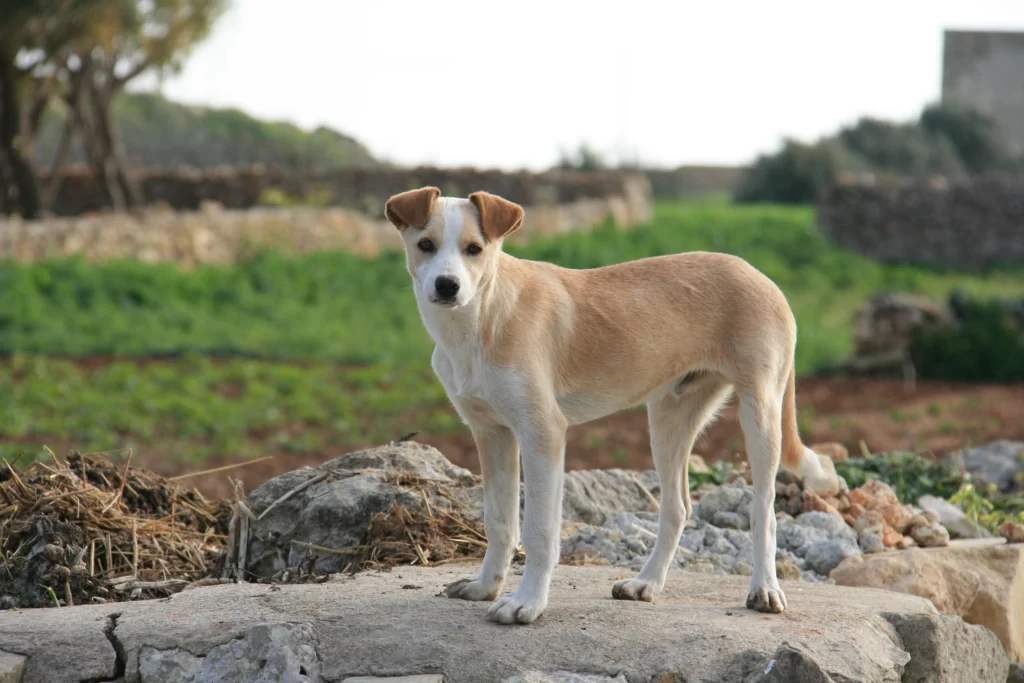
Challenges and Myths
While Indian Pariah Dogs are amazing dogs to adopt, they also face some challenges and myths that may hinder their adoption and welfare. Some of these are:
Lack of awareness and appreciation:
Many people are not aware of the history, heritage, and value of Indian Pariah Dogs and do not appreciate their unique and ancient characteristics. They may prefer other breeds, such as foreign, purebred, or designer dogs, that are more popular, fashionable, or expensive. They may also have negative stereotypes or biases about Indian Pariah Dogs, such as that they are ugly, inferior, or worthless.
Lack of regulation and enforcement:
Many Indian Pariah Dogs are not registered, microchipped, or licensed and do not have any legal protection or rights. They may be abused, neglected, or exploited by irresponsible or malicious owners, breeders, or traders. They may also be victims of illegal or unethical practices, such as dog fighting, baiting, or smuggling. They may not have access to justice or recourse in case of any violation or harm.
Lack of resources and support:
Many Indian Pariah Dogs cannot access adequate resources and support, such as food, water, shelter, veterinary care, or adoption. They may suffer from hunger, thirst, exposure, disease, or injury and receive no treatment or relief. They may also face competition, conflict, or aggression from other dogs or animals for the limited resources and space. They may lack opportunities or outlets to find a loving and permanent home.
How to Support Pariah Dog Adoption Initiatives
If you want to support Pariah Dog adoption initiatives, and help these dogs find their forever homes, you can do so in various ways, such as:
- Educate yourself and others:
You can educate yourself and others about the history, heritage, and value of Indian Pariah Dogs and why they are beautiful dogs to adopt. You can also debunk some common myths and misconceptions about these dogs and spread awareness and appreciation for them. You can use various sources and platforms, such as books, articles, documentaries, podcasts, blogs, social media, or word-of-mouth, to share and disseminate information and knowledge about these dogs.
- Donate or volunteer:
You can donate or volunteer to various rescue organisations or shelters that work with Indian Pariah Dogs and help them with their mission and vision. You can donate money, goods, or services, such as food, water, medicine, equipment, or transport, to support their operations and activities. You can also volunteer your time, skills, or expertise, such as fostering, training, grooming, or marketing, to assist their efforts and endeavours. You can contact or visit these organisations or shelters to learn how to contribute and participate.
- Advocate or campaign:
You can advocate or campaign for the rights and welfare of Indian Pariah Dogs and for the regulation and enforcement of the laws and policies that affect them. You can also lobby or petition to improve and reform the laws and policies to make them more humane and effective. You can also raise or join issues or causes, such as anti-cruelty, anti-breeding, or pro-adoption, that are relevant and important for these dogs. You can use various methods and channels, such as letters, emails, calls, meetings, rallies, or protests, to express your opinions and demands.
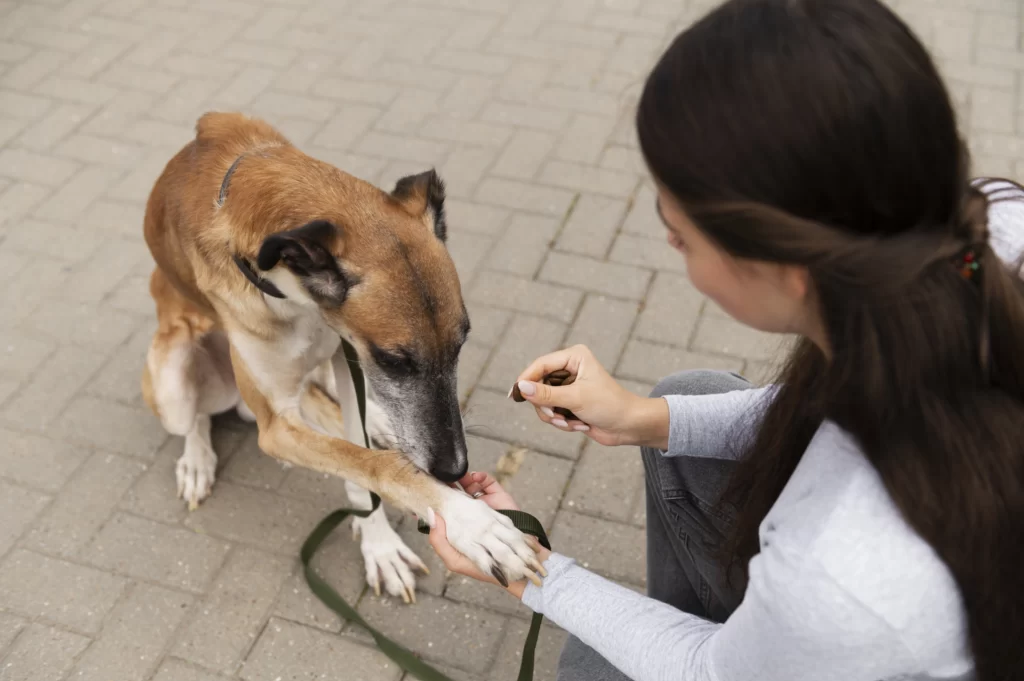
FAQ
What is the main argument of the blog post?
The blog post argues that keeping street dogs in their natural habitat is compassionate, practical, and beneficial for both the dogs and the humans. It provides evidence and examples to support this claim, such as street dogs’ ecological role, adaptation to urban environments, contribution to public health and safety, and social and emotional value.
What are the sources of information used in the blog post?
The blog post cites various studies, reports, and articles from reputable organisations and experts, such as the World Health Organisation, the Humane Society International, the Animal Welfare Board of India, and the Federation of Indian Animal Protection Organisations. It also includes personal anecdotes and observations from the author and other dog lovers.
What are the alternatives to keeping street dogs in their natural habitat ?
The blog post mentions some common alternatives often proposed or implemented by the authorities or the public, such as culling, relocation, confinement, or adoption. It explains why these alternatives are ineffective, unethical, or harmful for both the dogs and the humans and how they violate the legal and moral rights of the animals.
What are the challenges and risks of keeping street dogs in their natural habitat ?
In Street Dogs In Their Natural Habitat blog post acknowledges some challenges and risks involved in coexisting with street dogs, such as the possibility of dog bites, rabies, noise, nuisance, or conflict with other animals or humans. It suggests some practical and humane solutions to address these issues, such as sterilisation, vaccination, education, awareness, and cooperation.
What are the benefits of keeping street dogs in their natural habitat ?
The blog post highlights some of the benefits of keeping street dogs in their natural habitat , such as the following:
- Street dogs play an essential role in the ecosystem, as they control the population of rodents and other pests, scavenge waste, and balance predators and prey.
- Street dogs are well adapted to the urban environment, as they have evolved to survive and thrive in various conditions, such as traffic, pollution, weather, and human activity.
- Street dogs contribute to public health and safety, as they deter criminals, alert residents, and provide companionship and emotional support to many people, especially the marginalised and the lonely.
- Street dogs have social and emotional value, as they are part of the community and the culture and have their own personalities, preferences, and relationships.
How can I help street dogs in their natural habitat ?
The blog post offers some suggestions on how to help street dogs in their natural habitat , such as the following:
- Respect their space and freedom, and do not disturb, harass, or harm them.
- Provide them with food, water, shelter, and medical care, if needed, and do not feed them anything harmful or inappropriate.
- Support the local animal welfare organisations and groups that work for the welfare and rights of street dogs, and volunteer or donate if you can.
- Report any cases of cruelty, abuse, or neglect of street dogs to the authorities or the NGOs and seek legal action if necessary.
- Educate yourself and others about the facts and myths about street dogs, and spread awareness and compassion among your family, friends, and neighbours.
What are the laws and policies regarding street dogs in India?
The blog post refers to some of the laws and policies regarding street dogs in India, such as the following:
- The Prevention of Cruelty to Animals Act 1960 prohibits any person from causing unnecessary pain or suffering to any animal and prescribes penalties for offenders.
- The Animal Birth Control (Dogs) Rules, 2001, mandate the municipal authorities to conduct sterilisation and vaccination programmes for street dogs and prohibit their killing or relocation, except in cases of incurable illness or danger to human life.
- The Constitution of India recognises every citizen’s duty to protect and improve the natural environment, including wildlife, and the fundamental right of every animal to live with dignity and freedom.
What are some of the myths and misconceptions about street dogs?
In Street Dogs In Their Natural Habitat blog post debunks some of the myths and misconceptions about street dogs, such as the following:
- Street dogs are dirty, diseased, and dangerous, and they spread rabies and other infections to humans and other animals.
- Street dogs are aggressive, violent, and unpredictable, and they attack people and other animals without provocation or reason.
- Street dogs are unwanted, unloved, and unhappy, suffering from hunger, thirst, cold, heat, injury, illness, and loneliness.
- Street dogs are a nuisance, a menace, and a burden, creating noise, mess, and trouble for society and the environment.
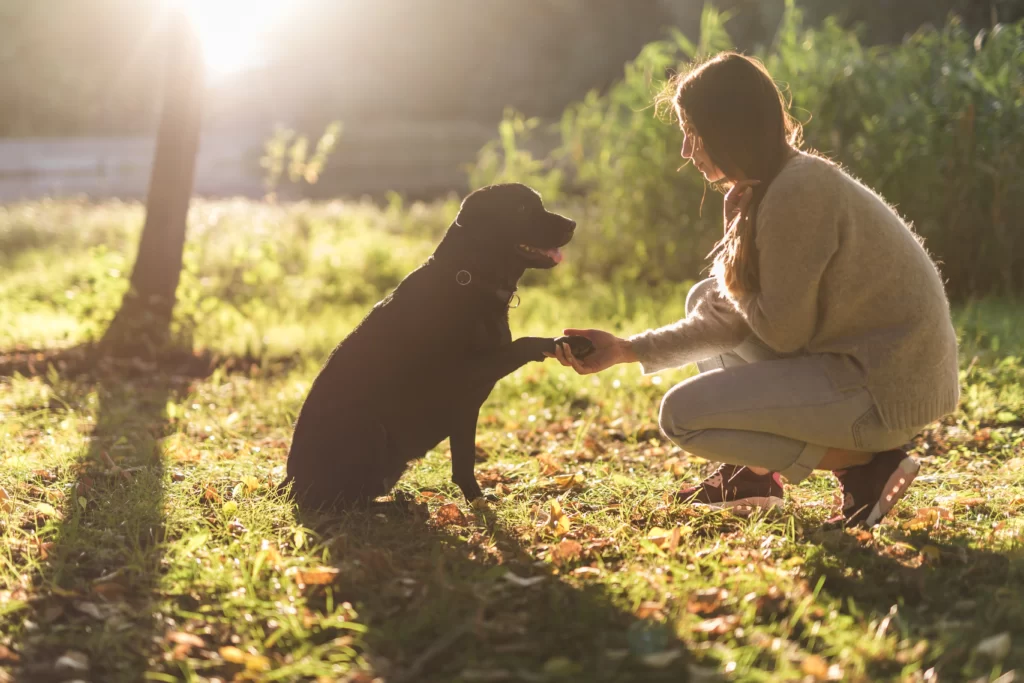
What are some of the facts and truths about street dogs?
The blog post reveals some of the facts and truths about street dogs, such as the following:
- Street dogs are clean, healthy, and resilient, and they have a robust immune system and a natural resistance to many diseases and infections, including rabies.
- Street dogs are friendly, loyal, and intelligent. They communicate and behave according to their instincts, emotions, and experiences. They rarely attack unless they are threatened, provoked, or abused.
- Street dogs are wanted, loved, and happy, and they have a rich and fulfilling life with adequate food, water, shelter, and medical care, and with their own families, friends, and territories.
- Street dogs are a blessing, a boon, and a joy, enriching society and the environment with their presence, service, and love.
Why should I read the blog post?
The blog post is a well-written, well-researched, and well-argued piece of writing that aims to inform, educate, and persuade readers about the topic of street dogs in their natural habitat. It is relevant and exciting, essential and urgent, as it addresses a social and environmental issue affecting millions of human and animal lives. It challenges the common assumptions and prejudices about street dogs and offers a different and positive perspective on them. It also inspires and empowers the readers to take action and make a difference for the betterment of the world.
Conclusion
Indian Pariah Dogs are the landrace of Indian dogs and are one of the oldest and most primitive types of dogs in the world. They have a long and rich history and heritage and have adapted to the Indian climate and environment. They have many unique and amazing traits and characteristics, such as intelligence, loyalty, health, and temperament, that make them ideal dogs to adopt. However, they also face many challenges and myths that may prevent them from finding their forever homes. Therefore, they need human intervention and support, such as education, donation, volunteering, advocacy, and campaigning, to improve their welfare and quality of life.
We hope that this blog post has given you some insight and inspiration on why and how to adopt an Indian Pariah Dog and how to support Pariah Dog adoption initiatives and understand Street Dogs In Their Natural Habitat. If you are interested in adopting an Indian Pariah Dog or want to learn more about them, you can contact us or visit our website, where you can find more information and resources. Thank you for reading, and remember, adopt, don’t shop!
